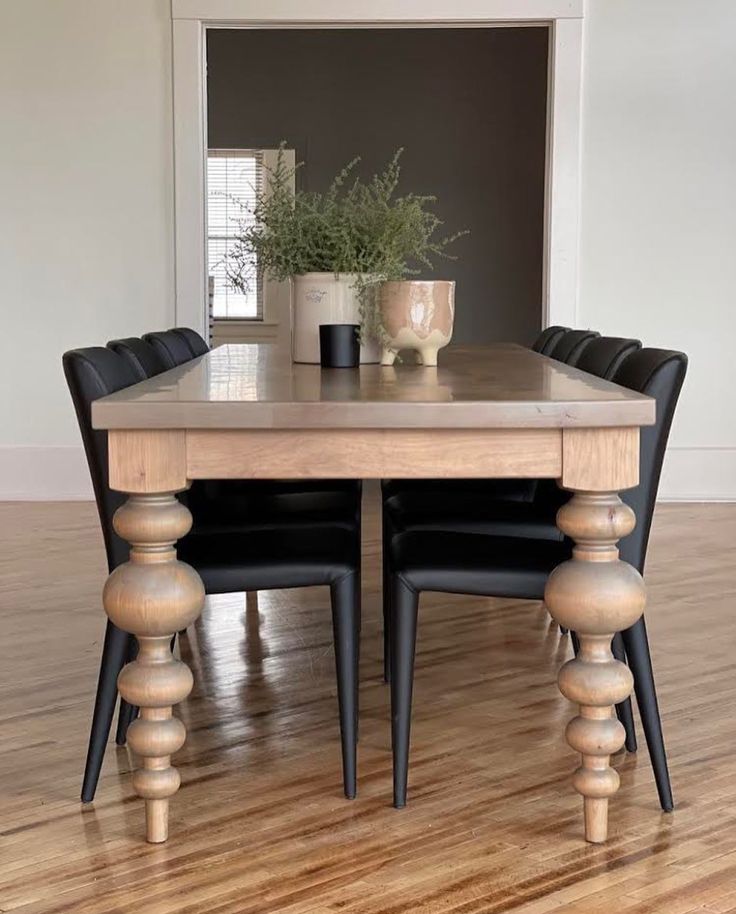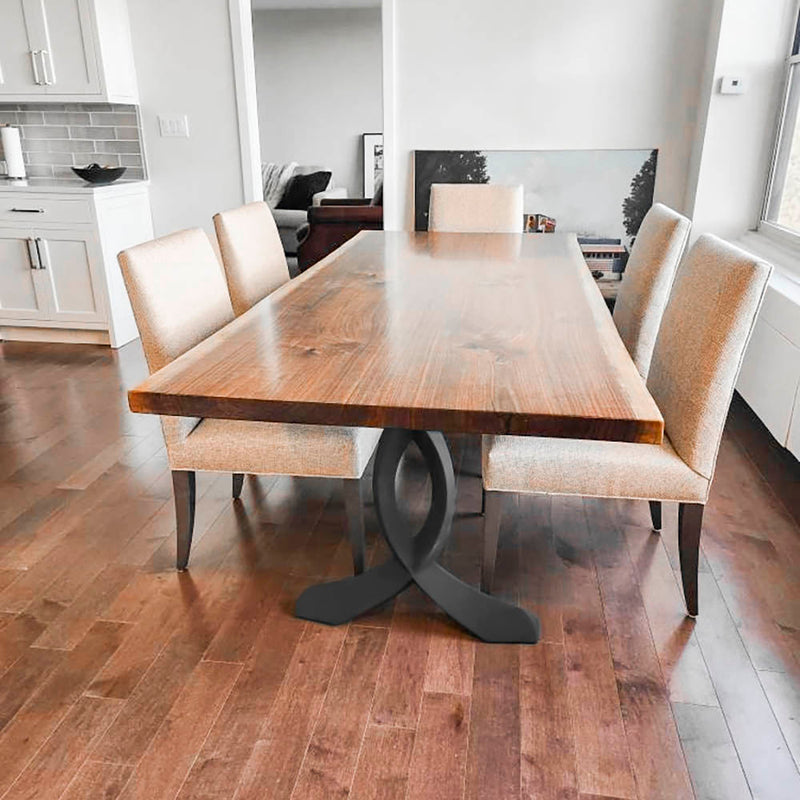From Standard to Modern: Discover the Suitable Dining Area Table Legs for Your Design
While classic styles such as cabriole and transformed legs evoke a feeling of timeless elegance, contemporary styles like barrette and geometric choices provide an opportunity for striking visual interest. As you think about these elements, the question stays: how can you seamlessly integrate these diverse leg styles to produce an unified dining experience?
Understanding Table Leg Styles
The range of dining-room table leg styles can dramatically influence both the aesthetic appeals and performance of the room. Each leg design contributes distinct aesthetic aspects and useful features, providing to varied style preferences and use requirements. Comprehending these styles is critical for choosing the appropriate table that aligns with your overall interior decoration vision.
For example, tapered legs provide a tidy, timeless look that can enhance a space's beauty, while pedestal bases supply stability and maximize legroom, making them ideal for smaller sized rooms. Hairpin legs, a hallmark of mid-century modern layout, present an industrial style, enabling for a ventilated, open feeling. Trestle legs evoke rustic appeal, supplying robust assistance and a feeling of eternity.
Additionally, the choice of materials plays a considerable role. Wood legs can bring heat and texture, whereas metal options frequently convey a sleek, modern vibe. Inevitably, comprehending table leg designs is essential for creating a natural dining location that mirrors personal style while ensuring practicality and convenience. By attentively thinking about these components, you can enhance both the visual and useful appeal of your dining room.
Conventional Table Leg Options
When selecting dining-room table legs, typical alternatives typically embody timeless style and workmanship. These styles reflect a rich heritage and a commitment to quality, making them optimal for those that appreciate traditional looks.
Among the most renowned typical leg designs is the cabriole leg, characterized by its graceful bent shape. This layout typically features ornamental makings and is most typically found in Queen Anne and Chippendale furnishings. An additional prominent choice is the turned leg, which flaunts a collection of smooth, rounded shapes that supply a timeless look while maintaining security.
In addition, the straight leg, while straightforward, uses a tough and unadorned framework that can mix flawlessly with a selection of tabletop designs. For those drawn to ornate detailing, claw-and-ball feet legs stimulate a sense of majesty and can work as a magnificent prime focus in any dining area.
Finally, stand bases, although not purely legs, provide an alternate conventional choice that permits ample legroom and can be wonderfully carved. Each of these typical leg designs contributes to the general ambiance of a dining space, marrying function with visual appeal.

Modern Table Leg Layouts
Modern table leg designs supply a varied variety of designs that emphasize tidy lines and ingenious materials. These layouts usually prioritize capability while functioning as striking focal points within a dining area. Minimalist visual appeals are widespread, with legs crafted from materials such as steel, glass, and crafted wood, which add to a modern and airy feel.
One popular design is the barrette leg, characterized by its slender, conical framework that gives security without frustrating the table top (dining room table legs). This style is usually found in mid-century contemporary furnishings and can effortlessly enhance different eating table forms. Another fad is the usage of geometric forms, where legs may handle angular or asymmetrical types, including visual rate of interest and a touch of virtuosity

Mixing Styles for One-of-a-kind Rooms
Often, property owners look for to create distinct dining spaces that mirror their individual design by mixing various design components. This approach allows for the consolidation of varied appearances, causing an unified yet distinct environment. As an example, combining a rustic wood table with sleek, modern metal legs can develop a captivating comparison that raises the space's overall allure.
Additionally, incorporating vintage table legs with modern table tops can stimulate a sense of background while preserving a modern-day perceptiveness. visit this website Such combinations not only showcase specific taste but additionally urge imagination, enabling home owners to curate an area that feels both personal and inviting.
Color plays a crucial role in this blending procedure; choosing table legs that enhance or comparison with the existing color pattern can improve visual passion. Whitewashed legs can soften the boldness of a dark table surface area, developing a well balanced visual.
Tips for Choosing the Right Legs
Choosing the right table legs is vital for attaining both performance and aesthetic appeal in your eating room. Begin by taking into consideration the overall design of your space. Conventional settings benefit from legs that feature elaborate carvings or turned layouts, while modern spaces may require streamlined, minimalist styles.
Next, analyze the elevation and security of the legs. dining room table legs. Standard dining tables range in between 28 to 30 inches in elevation, so make certain the legs complement this measurement for comfort. Furthermore, robust products, such as wood or metal, can enhance stability and durability
Examine the leg form too-- alternatives consist of straight, tapered, or stand designs. Straight legs offer a traditional look, while tapered legs can add a touch of beauty. Pedestal bases provide sufficient legroom and are ideal for smaller spaces.
Conclusion
In summary, picking the optimal dining room navigate to these guys table legs calls for cautious factor to consider of both conventional and contemporary styles. By balancing leg style, height, and material with the general decor, a natural and welcoming environment can be achieved.
The selection of dining room table leg styles can considerably affect both the visual appeals and functionality of the space. Inevitably, understanding table leg styles is crucial for producing a natural eating location that reflects personal style while ensuring practicality and comfort.One of the most legendary typical leg styles is the cabriole leg, identified by its elegant rounded shape. Straight legs supply a traditional appearance, while conical legs can include a touch of beauty.In recap, picking the suitable dining room table legs requires cautious factor to consider of both typical and modern designs.
Comments on “Upgrade Your Furniture with Custom Dining Room Table Legs”